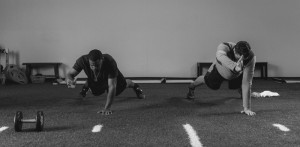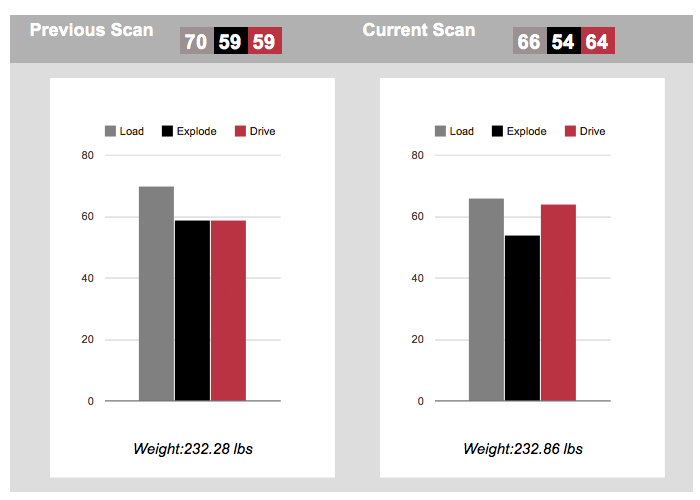
Back in April we wrote a post about trajectory, the idea that how an athletes performance can and should be measured and tracked over time. At the end of the post we discussed how our research has shown that our athletes actually take over50 days to show real adaptation to their training prescriptions. That phenomenon shows how important it is to keep a consistent approach, and this case study will illustrate that point.
The MLB players who train in their off-season at Sparta usually put in the bulk of their work from November through January. Pitchers and catchers start reporting to camp in February and position players soon after that. It’s always a little tempting to be short-sided and start backing off on players’ training as they start to get back on the field with Spring Training looming. But the baseball season is extremely long, so we usually keep the throttle pretty wide open right up to when the players leave for camp. There are two benefits to this approach. The first was discussed in the post referenced above; we won’t know if our prescriptions are having the desired effect unless we stick with them long enough to find out. The second is something we call delayed transformation, the idea that if you over-reach or slightly over-train in the short term, then back off and recover, your body will super compensate with greater than normal gains.
It’s definitely hard to not pull back on the intensity and let these players see some of the fruits of their labor. But when we are able to to see the long term benefits these players enjoy throughout out the season it makes up for all those long grueling session in January. A MLB starting pitcher we work with was in town to play the Giants and came in for a quick scan to see how his Sparta signature was looking half way thought the season. He is currently having the best season of his career so we were not surprised to see that his scan had produced his best movement signature of the entire off-season/ year. The graph on the lower left is his movement signature just before he left for spring training. This player has always had amazing LOAD but struggled to produce great DRIVE. Our prescriptions are always aimed at increasing his DRIVE so he can be more rotationally powerful, extending and finishing movements better. Our ideal shape for a rotational athlete (like a pitcher) is one where the bar graph of LOAD, EXPLODE, and DRIVE create a “U” shape, with the t scores for LOAD and DRIVE higher than EXPLODE. The Sparta signaturebelow on the right is from his current scan; his best scan of the year and probably the best scan he has had in his 6 off-seasons training with us.

His DRIVE is up and shape of his graph is almost perfect for a rotational athlete. This is after 20 starts and 130 innings pitched! Part of the reason we feel so confident pushing players through training lows is that we have the data to back us up. We know they’ll not only come out of the low, but that they’ll be better in the long run for it. This highlights the importance of not only having a plan and sticking to it, but logging plans statistically so you can be sure your timelines are accurate.